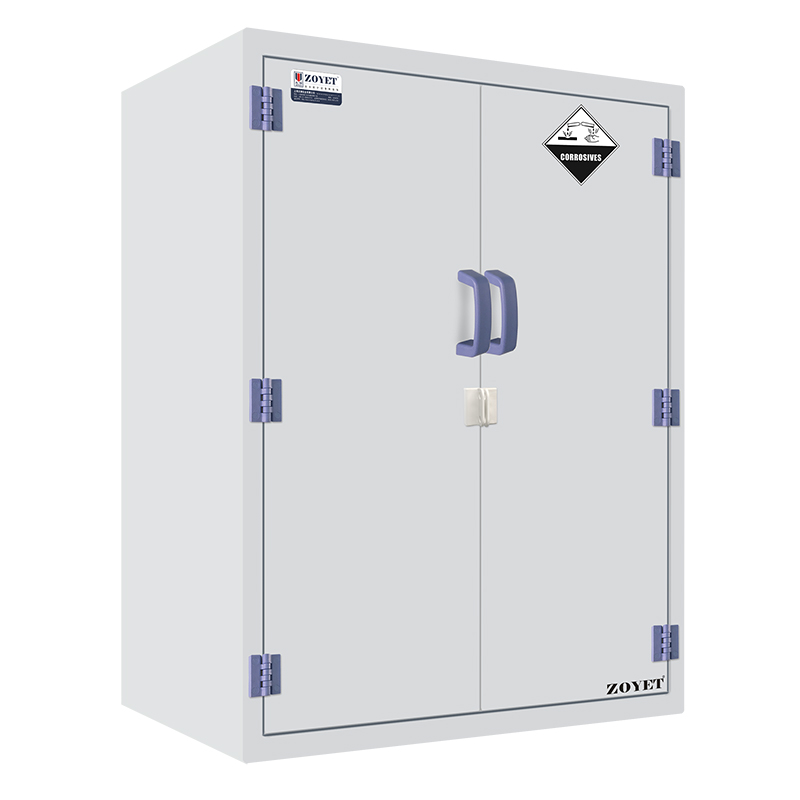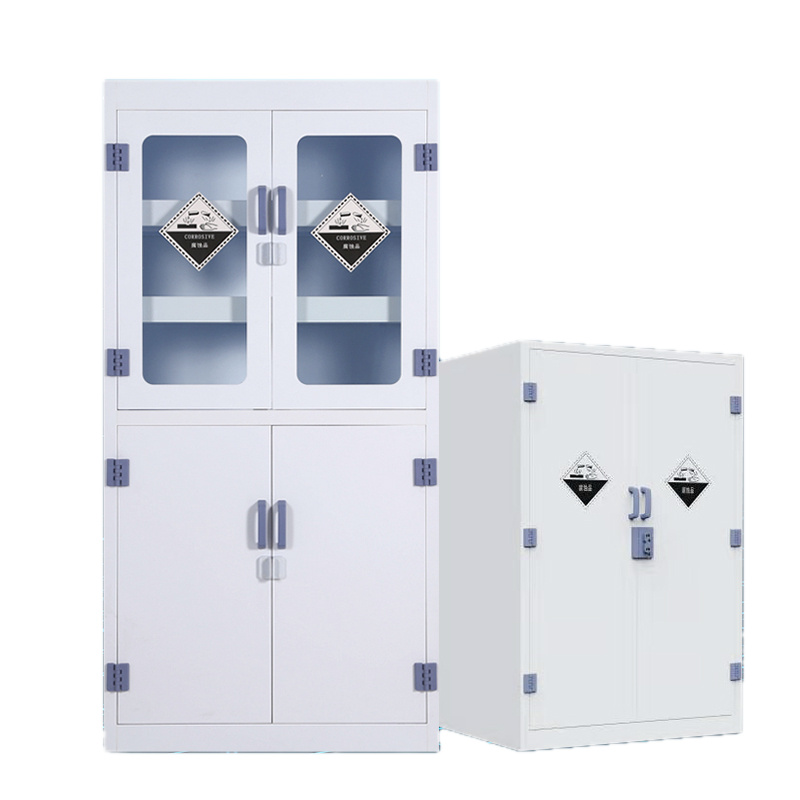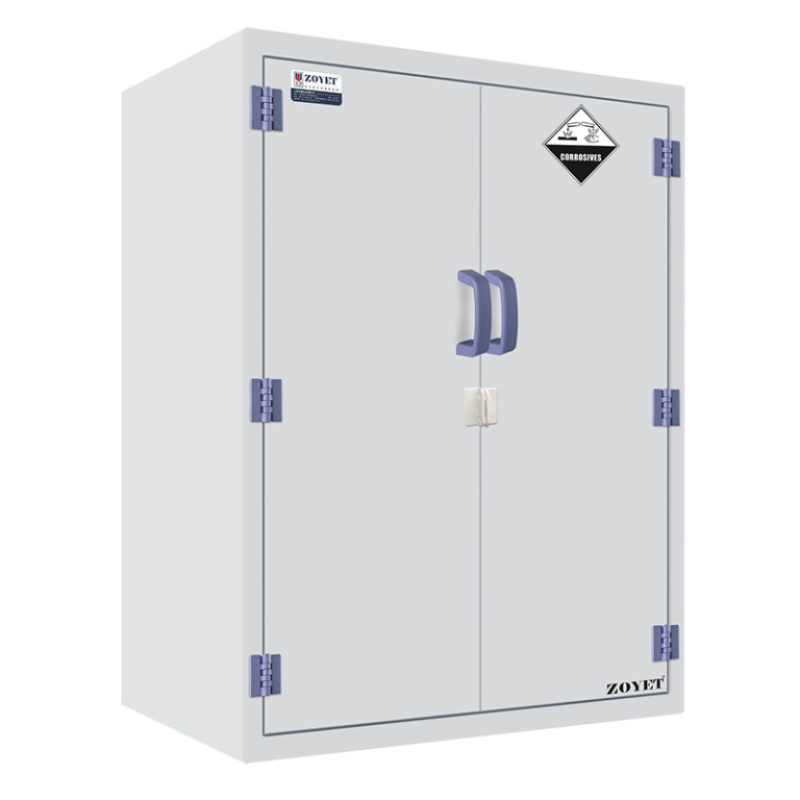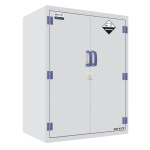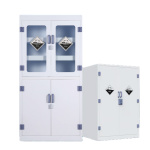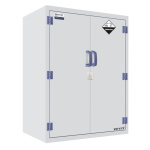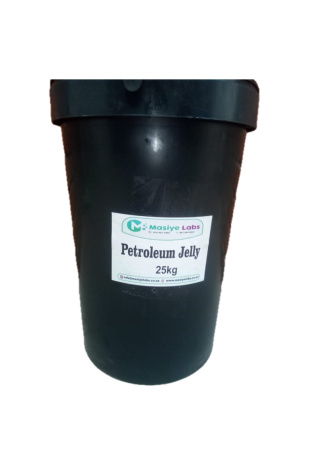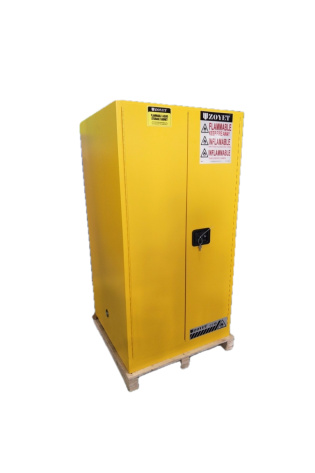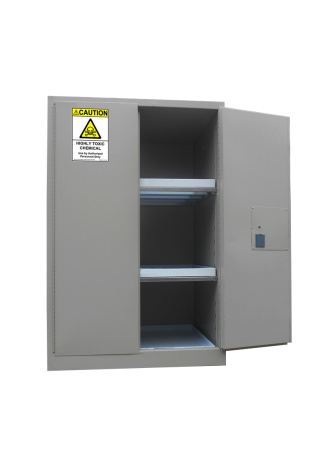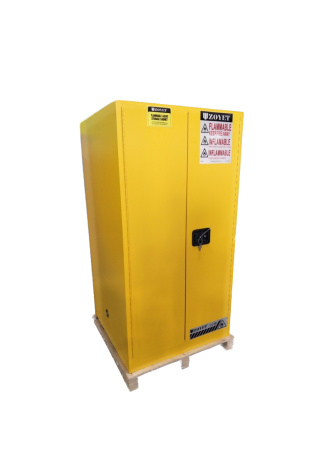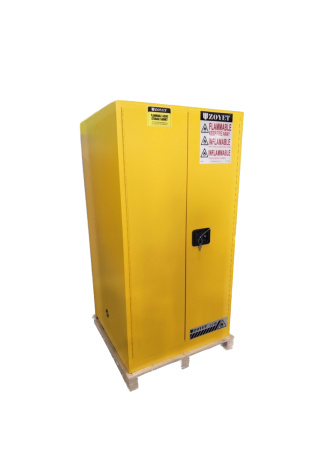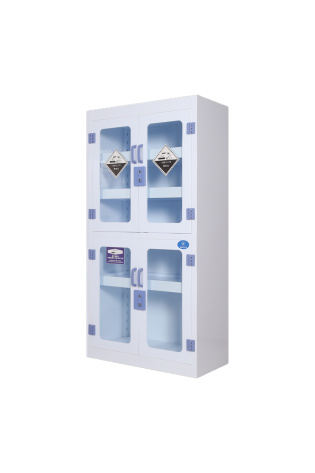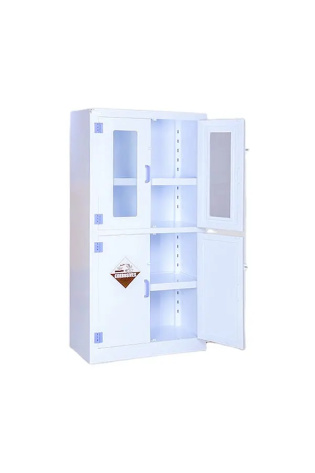Corrosive Chemicals Storage Cabinet
Lab chemical storage cabinets are used to safely store a variety of hazardous chemicals, including flammable liquids, corrosive materials like acids and bases, and toxic substances. These cabinets are designed to protect the chemicals from external hazards, prevent accidental releases, and minimize the risk of fire or other dangerous reactions.
Here’s a more detailed look at their uses: Corrosive Chemicals Storage Cabinet
1. Flammable Liquids: Flammable liquid storage cabinets are specifically designed to withstand fire and prevent the spread of flames, protecting both the chemicals inside and the surrounding lab environment. They may include features like fire-resistant construction, vents (which are often kept plugged to contain vapors), and spill containment systems.
Corrosion Storage Cabinet Used in Laboratory, Weak Acid Laboratory Chemical Storage Cabinet
2. Corrosive Materials: Corrosive cabinet are used for storing acids and bases, ensuring that these materials are kept separate and contained to prevent dangerous reactions or spills. They often have features like spill containment trays, acid-resistant coatings, and may be vented to remove corrosive fumes.
3. Toxic Substances: Toxic chemical storage cabinets are designed to isolate and protect against the dangers of toxic chemicals, preventing exposure to laboratory personnel. They may include features like secure locking mechanisms and specific ventilation systems to control the release of harmful vapors.
4. Separation and Segregation: Chemical storage cabinets are crucial for segregating chemicals based on hazard class (flammables, corrosives, oxidizers, etc.) to prevent incompatible substances from mixing and causing dangerous reactions,.
5. Protection from Environmental Factors: In addition to fire protection, storage cabinets can also protect chemicals from environmental factors like light, moisture, and temperature fluctuations, which can affect the stability of certain chemicals.
6. Compliance with Regulations: Many laboratories are required to use storage cabinets to comply with safety regulations and standards for handling hazardous materials, according to the Canadian Centre for Occupational Health and Safety.
7. Controlled Access: Cabinets may include locks to restrict access to authorized personnel, preventing accidental or improper handling of hazardous chemicals, according to the Canadian Centre for Occupational Health and Safety.
Chemical Storage Cabinet – dsigntory.com
In essence, chemical storage cabinets are essential for maintaining a safe and efficient laboratory environment by providing secure, segregated, and protected storage for a wide range of hazardous chemical
Corrosive Chemicals Storage Cabinet

Acid & Corrosive Cabinet, Chemicals storage cabinet, lab cabinets.
- 2 door, manual
- 2 Shelves
- Capacity – 60Gal/227L
Corrosive Chemicals Storage Cabinet
1,Internationally recognized PP (polypropylene) are used to form the cabinet by seamless welding engineering
2,Material thickness: 8mm and 100mm thickness PE board are optional
3,Equipped with internationally recognized leakage proof sump, which could be detached out to be cleaned. Shelves are adjustable.
4,Cabinet doors are marked clearly with warning label reading “CORROSIVE”
5,To improve operational safety, padlock could be used to provide extra protection.
6,Cabinet door could be customized as left-open or right-open. Various sizes of double door or single door could be customized.
7,Used to store strong corrosive chemicals, such as sulfuric acid, nitric acid, acetic acid etc. to protect cabinet operator
and prople around. Corrosive Chemicals Storage Cabinet
Corrosive Chemicals Storage Cabinet
